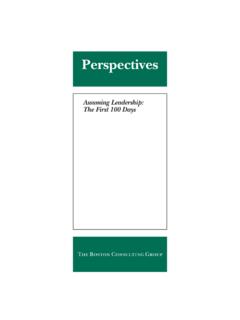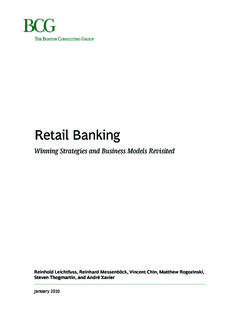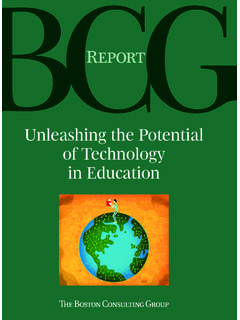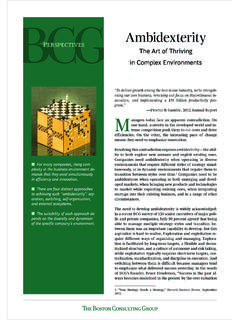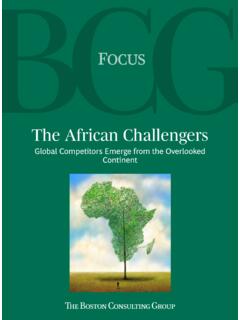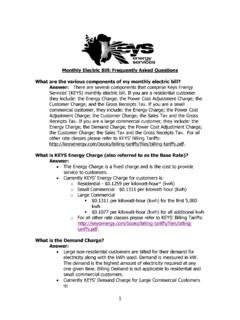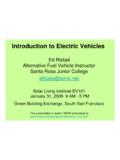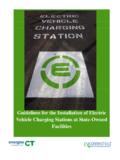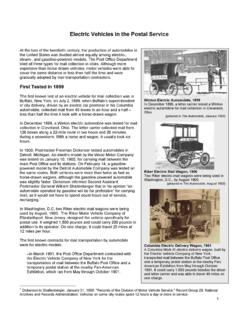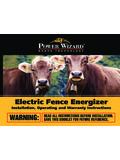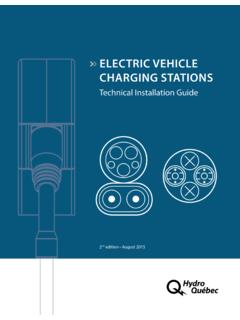Transcription of Batteries for Electric Cars
1 Batteries for Electric CarsChallenges, Opportunities, and the Outlook to 2020 FocusThe Boston Consulting Group (BCG) is a global manage-ment consulting firm and the world s leading advisor on business strategy. We partner with clients in all sectors and regions to identify their highest-value opportunities, address their most critical challenges, and transform their businesses. Our customized approach combines deep in-sight into the dynamics of companies and markets with close collaboration at all levels of the client organization.
2 This ensures that our clients achieve sustainable compet-itive advantage, build more capable organizations, and secure lasting results. Founded in 1963, BCG is a private company with 67 offices in 39 countries. For more infor-mation, please visit for Electric cars 1 Batteries for Electric CarsChallenges, Opportunities, and the Outlook to 2020 What impact will the development and cost of vari-ous types of bat-teries have on the emerging market for Electric cars ? How much progress can we hope to see in the next decade, and what critical barriers will need to be overcome along the way?
3 The automotive industry s quest to limit its impact on the environment and transform automotive mobility into a sustainable mode of transpor-tation continues at high intensity, de-spite the current economic crisis. In an earlier report, we analyzed the technical and cost tradeoffs of com-peting alternative power-train In this companion piece, we address the two principal vari-ables in our analysis of the develop-ing market for Electric cars : the tech-nical attributes and the costs of lithium-ion Batteries for Electric -vehi-cle applications.
4 In assessing these variables, we drew on The Boston Consulting Group s extensive work with automotive OEMs and suppliers around the world and on a detailed analysis of the relevant intellectual-property landscape. We also created a battery cost model that allows us to project future costs. In addition, we conduct-ed more than 50 interviews with bat-tery suppliers, automotive OEMs, university researchers, start-up com-panies working on leading-edge bat-tery technologies, and government agencies across Asia, the United States, and Western Europe.
5 In this report, we explore four main questions: What technological chal-lenges must be overcome in order for lithium-ion Batteries to meet funda-mental market criteria? As battery technologies reach maturity, what might their cost profiles look like? What will Electric vehicles total cost of ownership (TCO) amount to? And how are industry participants likely to align themselves as they jockey for position in the evolving market? The Current State of Electric -Car Battery Technology The value chain of Electric -car bat-teries consists of seven steps: compo-nent production (including raw ma-terials); cell production; module production; assembly of modules into the battery pack (including an electronic control unit and a cooling system); integration of the battery pack into the vehicle; use during the life of the vehicle; and reuse and re-cycling.
6 (See Exhibit 1.) In this report we focus on the first four steps, which make up the manufacture of battery packs for use by OEMs. Lithium-ion Batteries comprise a family of battery chemistries that employ various combinations of an-ode and cathode materials. Each combination has distinct advantages and disadvantages in terms of safety, performance, cost, and other param-eters. The most prominent technolo-gies for automotive applications are lithium-nickel-cobalt-aluminum (NCA), lithium-nickel-manganese- cobalt (NMC), lithium-manganese spinel (LMO), lithium titanate (LTO), and lithium-iron phosphate (LFP).
7 The technology that is currently most prevalent in consumer applica-tions is lithium-cobalt oxide (LCO), which is generally considered unsuit-able for automotive applications be-cause of its inherent safety risks. All automotive battery chemistries re-quire elaborate monitoring, balanc-ing, and cooling systems to control the chemical release of energy, pre-vent thermal runaway, and ensure a reasonably long life span for the cells. 1. See The Comeback of the Electric Car? How Real, How Soon, and What Must Happen Next, BCG Focus, January The Boston Consulting GroupIn this paper we do not address the impact of new battery chemistries, lithium-based or otherwise, because none of the players we interviewed expect that Batteries based on new chemistries will be available for pro-duction on a significant scale by 2020.
8 However, there is increasing in-terest and activity, particularly among university research laborato-ries, in exploring new electrochemi-cal mechanisms that might boost the specific energy and performance of future Batteries . Patent filings related to energy storage increased 17 per-cent per year from 1999 through 2008, twice as fast as during the pre-vious ten years and some ten per-centage points faster than overall patent growth during the same peri-od. Of the energy-storage patents filed in China, Japan, the United States, and Western Europe in 2008, lithium-ion technologies accounted for 62 percent, having grown at 26 percent per year from 2005 through 2008.
9 Lithium-ion patents relating to electrode chemistry, materials, and electrolytes were filed principally by universities, whereas those relating to pack structure, cooling, and con-trols were filed mainly by OEMs and suppliers. LFP technology has been the focus of at least twice as much patent activity as LTO technology and four times as much as NMC technology, most likely because of LFP s promising safety characteris-tics and higher usable capacity. The recent explosion in innovation is driven by the need to break some fundamental compromises in battery technology.
10 On the technical side, competing lithium-ion technologies can be compared along six dimen-sions: safety; life span (measured in terms of both number of charge-and-discharge cycles and overall battery age); performance (peak power at low temperatures, state-of-charge measurement, and thermal manage-ment); specific energy (how much energy the battery can store per kilo-gram of weight); specific power (how much power the battery can store per kilogram of mass); and cost. (See Exhibit 2.) On the business side, high costs remain the major hurdle.


